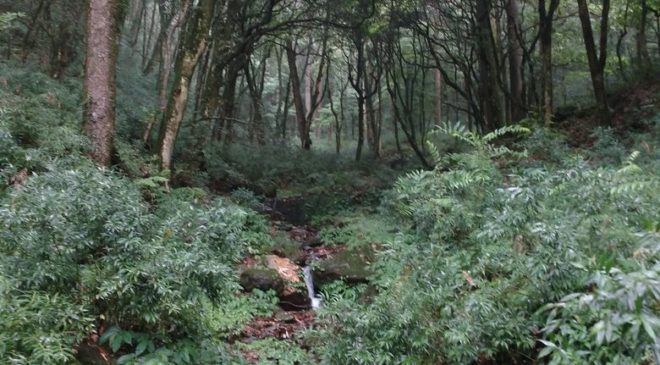By: Rakesh Lohumi, Sr. Advisor & Sr. Editor-ICN Group
After the famous South African city of Cape Town the worst-ever water crisis in India’s premiere hill station of Shimla this summer has raised serious concerns over the growing threat to water security.
The unprecedented shortage of water in the erstwhile British summer capital is a pointer to the problems being faced by mountain dwellers due to severe degradation of the ecologically fragile Himalayan region.
Increasing human activity in the world’s tallest mountain ranges has started taking its toll in states and state like Himachal and Uttarakhand are feeling the impact in the form of escalating water crisis, declining snow and rain, fluctuating and dwindling apple production and a spurt in landslides and rampant forest fires.These are all consequences of the flawed policies and lopsided development model being pursued over the past several decades. The fact that the hills have a limited carrying capacity has been completely ignored and the true value and importance of forests in maintaining the mountain ecosystems has also been overlooked. Given the severity of water scarcity, the policy-makers must realize that the most important benefits the forests bestow are the life sustaining water and oxygen and timbre is secondary.
The hills have been burdened beyond their carrying capacity and state like Himachal provide the most glaring example of unsustainable development. Out of the total geographical area of 55,673 sq km as much as 45,123 sq km, over 81 percent, falls in the environmentally sensitive higher Himalayan ranges, over an altitude of 1000 m, where forests have a vital role in maintenance of mountain ecology, particularly in recharging of water sources, maintaining hydrological cycle, providing oxygen and checking soil erosion. The state needed to conserve, extend and improve the quality of its forests all the more as it lags far behind other Himalayan states, except Jammu and Kashmir, with just 15,100 sq km (27.12 percent) of its total geographical area under the green cover as per the latest State of Forests Report (SFR)-2017. Even the more populous state of Uttarakhand, which has slightly less area of 53,483 sq km, has a much larger area of 24,295 sq km (45.43 per cent) under forests.
Worse, the quality and expanse of forests have been declining in the high altitude areas progressively. The areas under very high density forests (with tree canopy density above 70 percent) has come down from 3224 sq km in 2009 to 3110 sq km in 2017, while area under degraded open forests ( with tree canopy density between 10 to 40 percent) has increased by 224 sq km. More importantly, forest cover in most fragile high attitude zone beyond 3000 m, where regeneration is a Herculean task, plummeted from 2489 sq km to 1880 sq km, an alarming decline of 689 sq km over the eight-year period. The major increase of 895 sq km has been in the lower hill ranges up to an altitude of 2000 m. Thus, the overall increase of 432 sq km in the forest cover over the period will not help much in rehabilitation of the degraded environment.
Hydropower projects, power transmission lines and roads have taken the maximum of toll of the tree cover in the sparsely populated high altitude areas. Out of the total 13,027 hectare of forest area diverted for non-forestry use up to March 31,2018 as many as 7,458 hectare has been gobbled up by power plants and transmission lines , followed by roads (3,128 hectare) and mining (918 hectare).
The Rainfall data gathered by Bhakra Beas Management Board also shows a steady decline in precipitation during the monsoon in the catchment area of Sutlej and Beas rivers. The total rain in the catchment area from June to September has come down from 1,092 mm in 2008-09 to 621 mm in 2018-17, an alarming decline of 44 percent in less than 10 years. A study conducted by Subimal Ghosh of IIT Bombay found that the reduction in rainfall was more pronounced in north and northeast India. The years between 1980-1990 and 2000-2010 saw decline in forest cover and rainfall. It was also found that large-scale conversion of forests to crop lands had resulted in a decline in evapo-transpiration, a process by which moisture is transferred from soil and plants to the atmosphere. Unlike the deep rooted forest vegetation, the shallow roots of crops are unable to extract water which results in reduced recycled precipitation.
Besides, road projects have also eaten 2271 hectare of forest land, while 914 hectare of forest area has been given for mining. The number of trees axed for road projects is relatively much higher as land has been mostly acquired for up-gradation of state roads and construction of national highways.
Himachal Pradesh is already lagging far behind in protecting the green cover in comparison to other Himalayan states. With a geographical area of 55,673 sq km the state has only 15,100 sq km (27.12 per cent) of forests as per the State of Forests Report (SFR)-2017. In contrast, Uttarakhand with slightly less area of 53,483 sq km and a much higher population has 24,295 sq km (45.43 per cent) under forests. Similarly, Arunachal Pradesh with 66,964 sq km forest cover has 79.96 per cent, Mizoram 86.87 percent ( 18,186 sq km), Manipur 77.69 per cent(17,346 sq km). Meghalaya 76.45 per cent (17,146 sq km), Nagaland 75.33 per cent (12,489 sq km) and hill districts of Assam 67.91 percent (13,103 sq km)
The environmental fallout of increasing biotic pressure is already discernible in the form of declining snowfall and receding seasonal snow cover in regions areas like Shimla, Mussourie, Manali, Dharamsala, Naimital ,Kasauni and Kasauli which have witnessed rapid development in recent times..Streams, rivulets and nullahs , which sustain life in the hills, particularly the mid and high ranges, are drying up fast leading to an acute water scarcity during summer. Forested hills help maintain the vertical temperature gradient and act as natural cloud seeders to bring rains. Large-scale deforestation and concretisation have altered the micro-climate and as a result quantum of snow is declining progressively and the seasonal snowline is receding fast. Studies conducted by scientists of meteorological department have found that the snow season in Shimla has been shrinking at an alarming rate of 11 days per decade since 1991. Further, the overall precipitation during winter, from December to March, has also been declining with the decadal average coming down from 283.9 mm (1991-92 to 2000-01) to 235.1 mm (2001-02 to 2010-11).
High economic growth countries like China are realising importance of forests in combating environmental degradation. It is planting 6.66 million hectares of new forests during the current year to help raise its green cover from the current 21.7 percent to 23 percent by 2020. Similarly, a new suburban forest over an area of about 13 sq km is being raised in Paris to fight air pollution. India has no option but to raise new forests on a war footing to retard the process of environmental degradation.





